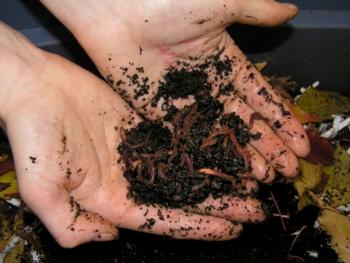Composting with Worms
Everything you need to know about vermicomposting

Organic materials make up approximately two-thirds of the waste stream. While much of this is paper which can be used more efficiently or recycled, a large portion is material like food waste for which few beneficial options outside of composting exist. Fortunately, nature has provided one option that has been receiving increasing attention--vermicomposting.
So what, you may ask, is vermicomposting and how does it work?
Well, "vermi" is the Latin word for worm, and worms like to feed on slowly decomposing organic materials (e.g., vegetable scraps). The "end" product, called castings, is full of beneficial microbes and nutrients, and makes a great plant fertilizer. So, vermicomposting is the practice of using worms to make compost simply by feeding them your food waste.
The reason vermicomposting is becoming popular is because worms are very efficient eating machines. They eat over half their body weight in organic matter per day!
Check out the links below for more information on starting your own worm bin!
CalRecycle - Vermicomposting: Composting with Worms
Worm and worm bin suppliers in Central CA (from CalRecycle)
Building your own worm bin - Includes instructions and dimensions for building a wooden box - from Seattle Tilth
Building your own worm bin - using a tote box (from US Environmental Protection Agency)
Classroom Guide to worm composting - (available from CalRecycle)
The Adventures of Herman the Worm (from the University of Illinois Extension) Interactive website in English or Spanish. Learn about the anatomy of worms as well as the importance in vermicomposting.
